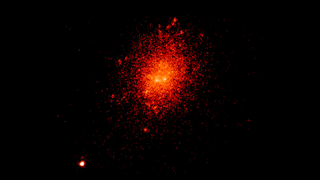Universe
ID: 10082
An international team of researchers analyzing decades of observations from many facilities, including NASA's Swift satellite, has discovered an unusual source in a galaxy some 90 million light-years away. The object's curious properties make it a good match for a supermassive black hole ejected from its home galaxy after merging with another giant black hole.
An alternative explanation for the source, called SDSS1133, is just as intriguing. It may be the remains of a massive star called a luminous blue variable (LBV) that exploded as a supernova. These stars undergo episodic eruptions that cast large amounts of mass into space long before their final blast. Interpreted in this way, SDSS1133 would represent the longest period of LBV eruptions ever observed, followed by a terminal supernova explosion in 2001.
Whatever SDSS1133 is, it's persistent. The team was able to detect it in astronomical surveys dating back more than 60 years.
The mystery object is part of the dwarf galaxy Markarian 177, located in the bowl of the Big Dipper, a well-known star pattern within the constellation Ursa Major. Although supermassive black holes usually occupy galactic centers, SDSS1133 is located at least 2,600 light-years from its host galaxy's core.
In June 2013, the researchers obtained high-resolution near-infrared images of the object using the 10-meter Keck II telescope at the W. M. Keck Observatory in Hawaii. They reveal the emitting region of SDSS1133 is less than 40 light-years across and that the center of Markarian 177 shows evidence of intense star formation and other features indicating a recent disturbance.
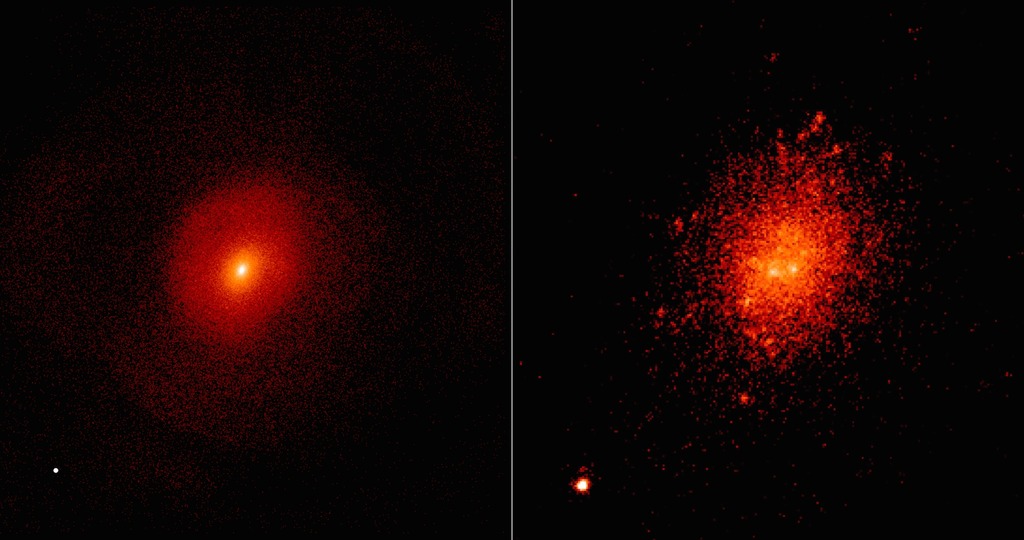
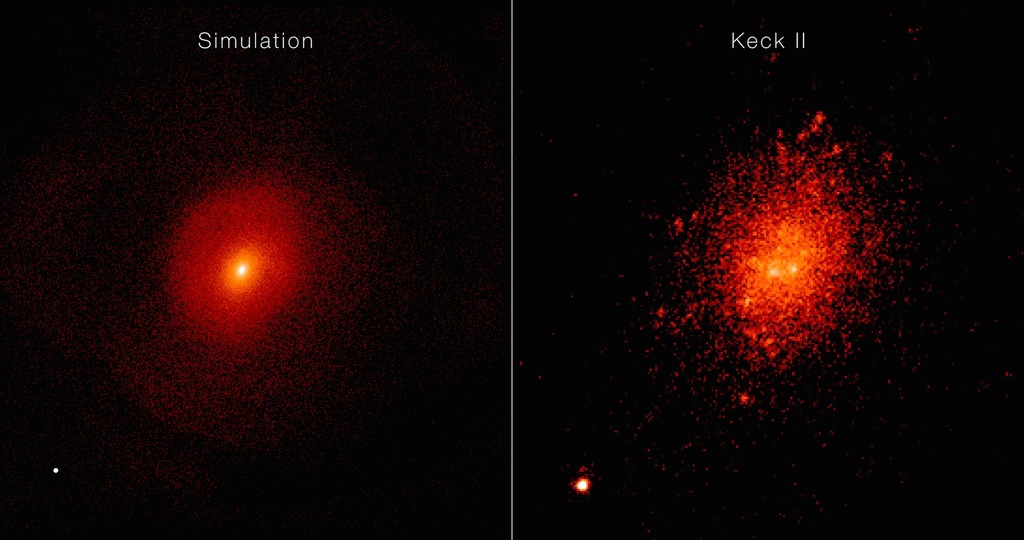
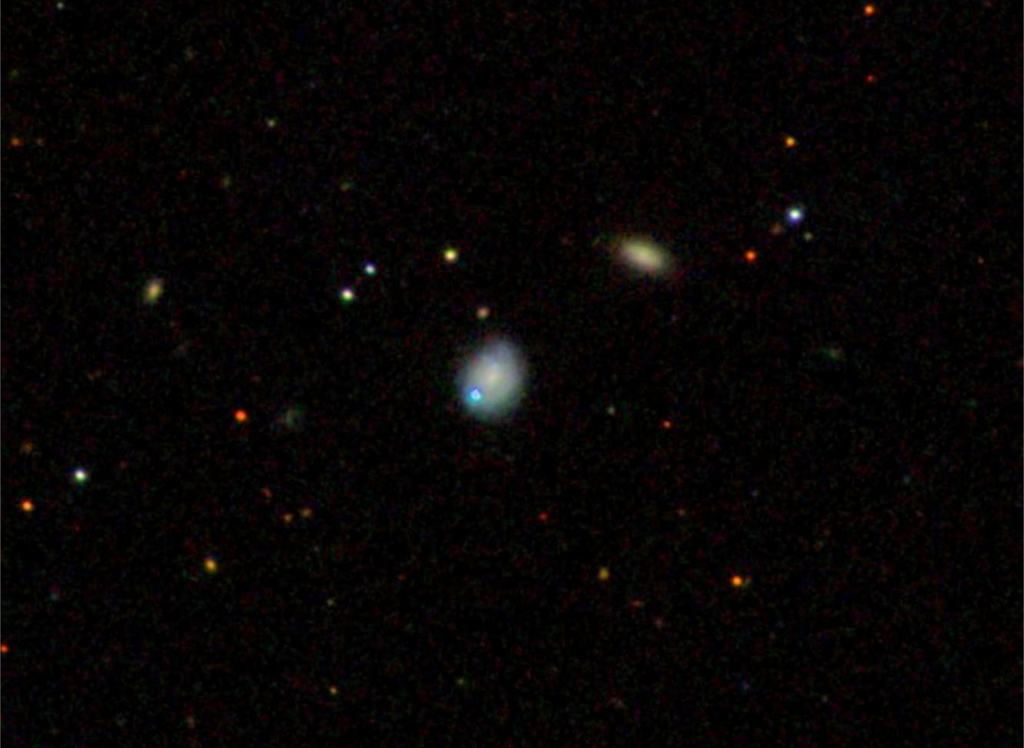
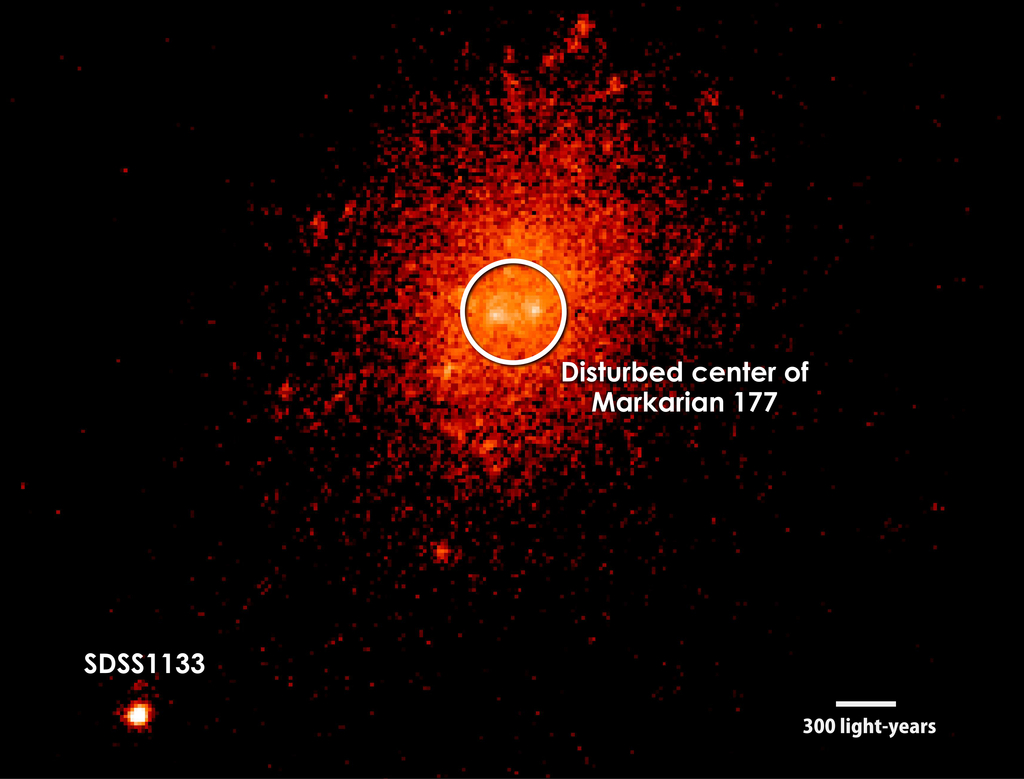
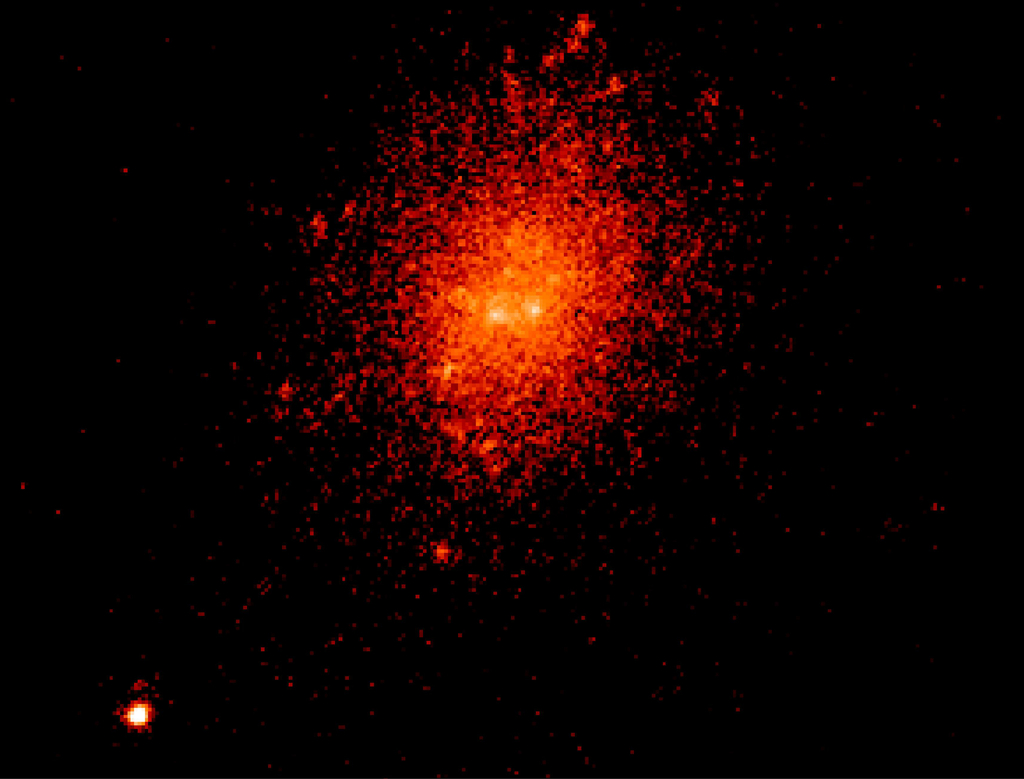
Swift Probes Exotic Object: 'Kicked' Black Hole or Mega Star?
An alternative explanation for the source, called SDSS1133, is just as intriguing. It may be the remains of a massive star called a luminous blue variable (LBV) that exploded as a supernova. These stars undergo episodic eruptions that cast large amounts of mass into space long before their final blast. Interpreted in this way, SDSS1133 would represent the longest period of LBV eruptions ever observed, followed by a terminal supernova explosion in 2001.
Whatever SDSS1133 is, it's persistent. The team was able to detect it in astronomical surveys dating back more than 60 years.
The mystery object is part of the dwarf galaxy Markarian 177, located in the bowl of the Big Dipper, a well-known star pattern within the constellation Ursa Major. Although supermassive black holes usually occupy galactic centers, SDSS1133 is located at least 2,600 light-years from its host galaxy's core.
In June 2013, the researchers obtained high-resolution near-infrared images of the object using the 10-meter Keck II telescope at the W. M. Keck Observatory in Hawaii. They reveal the emitting region of SDSS1133 is less than 40 light-years across and that the center of Markarian 177 shows evidence of intense star formation and other features indicating a recent disturbance.





Related
Credits
Scott Wiessinger (USRA): Video Editor
Scott Wiessinger (USRA): Producer
Francis Reddy (Syneren Technologies): Writer
Scott Wiessinger (USRA): Producer
Francis Reddy (Syneren Technologies): Writer
Please give credit for this item to:
NASA's Goddard Space Flight Center. However, individual items should be credited as indicated above.
NASA's Goddard Space Flight Center. However, individual items should be credited as indicated above.
Short URL to share this page:
https://svs.gsfc.nasa.gov/10082
This item is part of these series:
Astrophysics Simulations
Astrophysics Stills
Astrophysics Features
Keywords:
SVS >> Galaxy
SVS >> HDTV
SVS >> X-ray
SVS >> Black Hole
SVS >> Astrophysics
SVS >> Edited Feature
SVS >> Space
SVS >> Swift
NASA Science >> Universe
https://svs.gsfc.nasa.gov/10082
This item is part of these series:
Astrophysics Simulations
Astrophysics Stills
Astrophysics Features
Keywords:
SVS >> Galaxy
SVS >> HDTV
SVS >> X-ray
SVS >> Black Hole
SVS >> Astrophysics
SVS >> Edited Feature
SVS >> Space
SVS >> Swift
NASA Science >> Universe
